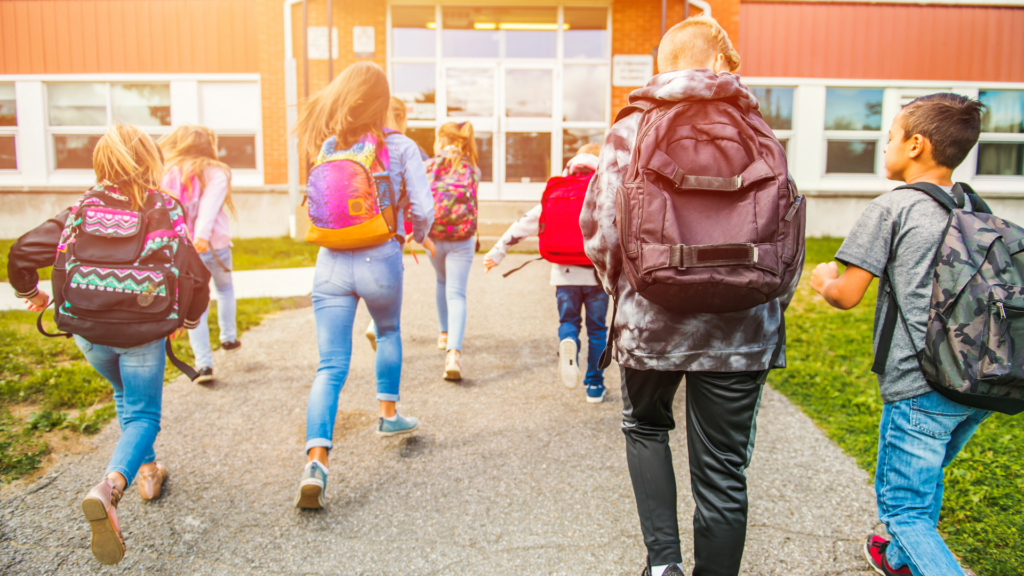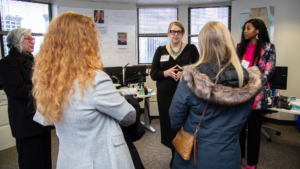It’s hard to get homework done when you don’t have a home. It’s hard to focus in class and on schoolwork with the anxiety of not knowing where you’ll sleep that night, what you’ll have to eat, when and where you can wash, and whether the other students and teachers are looking down on you and your family. Students experiencing homelessness often go without basic needs like regular meals and clean clothes. What if your homework requires internet access? Or even something as simple as a table to do your work at?
Housing stability is a predictor of success—or lack thereof—in school-aged youth. Students who are experiencing homelessness, or have experienced homelessness, are more likely to experience bullying and disciplinary action, less likely to graduate, and more likely to experience homelessness again in adulthood.
While the available data currently lags by a few years, it is well documented that prior to the pandemic, student homelessness was on the rise nationally. In Washington State, the latest research estimated that there were 40,000 homeless students in the state (enough to fill over 1,100 school buses). This is likely an underestimate, because student homelessness can be harder to spot than many assume, and the definitions are not clear.
While the federal McKinney-Vento Education of Homeless Children and Youth Assistance Act offers support and protections for students experiencing homelessness, many students may miss out on those services simply because they haven’t been identified as homeless by already overburdened school staff. Some students are denied the support that McKinney-Vento offers because the unclear definitions allow their district to classify them as “stably housed,” even if their family is staying in a hotel, or couch surfing in another school district after losing their home or apartment.
Experiencing homelessness as a child can create lifelong negative impacts. Children who experience homelessness are more likely to experience a higher level of traumatic experiences, raising their ACE (Adverse Childhood Experiences) score—and adults with high ACE scores are more vulnerable to homelessness.
It creates a cycle of stress and intergenerational trauma that is hard to disrupt.
But there are solutions. With training and education, proper funding, and adequate support, we can break the cycle, and give our kids a better chance to reach their full potential.
What can you do to support students experiencing homelessness?
At the KCRHA, we work alongside youth and family-focused organizations such as YouthCare, Friends of Youth, ROOTS, Treehouse, Mockingbird Society, YMCA, YWCA, Mary’s Place, and Teen Feed—orgs that provide services to students experiencing homelessness. There are several things you can do to help:
- For parents and guardians who are experiencing homelessness with their children: Know your rights, and the support systems available to you. You can learn more on the Washington State Office of the Superintendent’s (OSPI) website.
- For educators, administrators, and school staff: Be sure you’re well-versed in identifying students who may be experiencing homelessness, know what their rights are, and who the liaison for your school is.
- For parents experiencing homelessness of school-aged children and unaccompanied youth experiencing homelessness. If you are working with a family or youth shelter, they will have information about resources. You should also reach out to your McKinney-Vento liaison for your school.
- For housed parents of school-aged children: You can advocate for the unhoused children in your school, too. Knowing the rights and resources can make you a better advocate with teachers, principals, and school boards to ensure they are meeting the needs of the most vulnerable students in your community.
- Support organizations that serve school-aged children by donating financially, donating materials (e.g., back to school drive, children’s clothing, etc.), and volunteering your time. You can find organizations by visiting our Regional Services Database, and filtering by sub-populations focusing on youth and families.
- Advocate for better data. If we really want to be able to help students long term, we need to understand who they are, where they are, and what they need—and we need to understand this information on a continual basis. Right now, the available data surrounding state and local student homelessness is outdated, making it harder to support updated policies and resources.
Working to better support the students who are currently experiencing homelessness in King County will not just improve the lives of those students here and now, it will also change the cycle of homelessness, and give students, youth, and families a chance to thrive.



